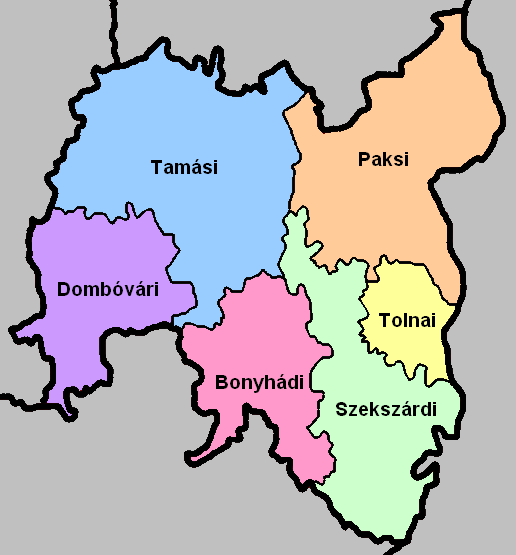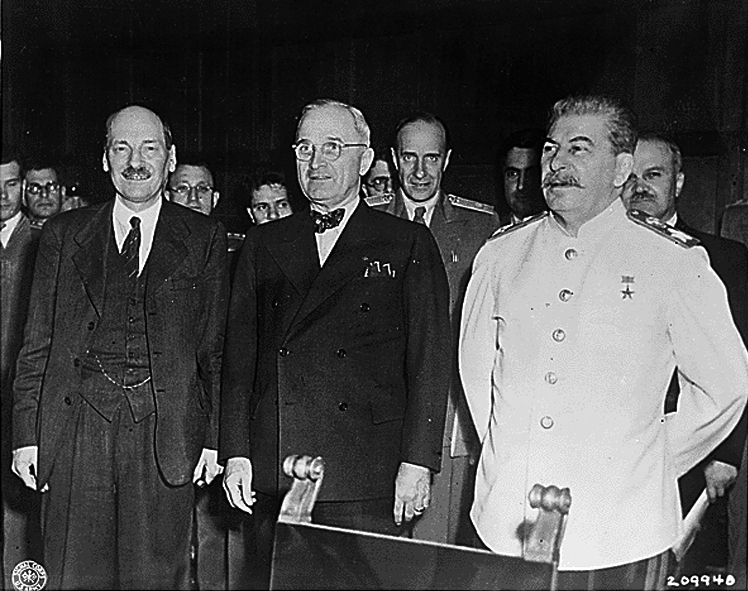|
Nagyszékely
Nagyszékely () is a village in Tolna county, Hungary. Until the end of World War II, the inhabitants' majority was Protestant Danube Swabian (Schwowe) whose ancestors once arrived in 1720-1722 and onwards from the Hanau surroundings like Hüttengesäss (the Neidhardt family), Langen (the Lehr family), Schlüchtern (the Hildebrand family), Udenhain (the Los and Reinhardt families), Villingen (the Hilgert family) and possibly the Isenburg-Meerholz county (the Hinckel family). Most of the former German settlers were expelled to Allied-occupied Germany and Allied-occupied Austria in 1945–1948, following the Potsdam Agreement. Around 1790, Catholic German families from Nagyszékely settled in Illocska Illocska (, sh-Cyrl-Latn, Илочац, Iločac) is a village in Baranya county, Hungary. Residents are Magyars, with a minority of Serbs and Danube Swabians. History Until the end of World War II, the majority of the inhabitants were Roman C .... References Populated ... [...More Info...] [...Related Items...] OR: [Wikipedia] [Google] [Baidu] |
Illocska
Illocska (, sh-Cyrl-Latn, Илочац, Iločac) is a village in Baranya county, Hungary. Residents are Magyars, with a minority of Serbs and Danube Swabians. History Until the end of World War II, the majority of the inhabitants were Roman Catholic Danube Swabians (Schwowe), their ancestors arrived in 1790 from Nagyszékely and Gyönk villages to Illocska. Most of the former German settlers were expelled to allied-occupied Germany and allied-occupied Austria in 1946–1948, following the Potsdam Agreement. Only a few Germans of Hungary live there, the majority today are the descendants of Hungarians from the Czechoslovak–Hungarian population exchange The Czechoslovak–Hungarian population exchange was the exchange of inhabitants between Czechoslovakia and Hungary after World War II. Between 45,000 and 120,000 Hungarians were forcibly transferred from Czechoslovakia to Hungary, and their propert .... They got the houses of the former Danube Swabian Inhabitants. References ... [...More Info...] [...Related Items...] OR: [Wikipedia] [Google] [Baidu] |
Tolna County
Tolna (, ; ) is an administrative county (Comitatus (Kingdom of Hungary), comitatus or vármegye) in present-day Hungary as it was in the former Kingdom of Hungary. It lies in central Hungary, on the west bank of the river Danube. It shares borders with the Hungarian counties of Somogy County, Somogy, Fejér, Bács-Kiskun, and Baranya (county), Baranya. The capital of Tolna county is Szekszárd. Its area is 3,703 km2. History Tolna (in Latin: ''comitatus Tolnensis'') was also the name of a historic administrative county (Comitatus (Kingdom of Hungary), comitatus) of the Kingdom of Hungary. Its territory, which was about the same as that of the present Tolna county, is now in central Hungary. The capital of the county was Szekszárd. Demographics In 2015, Tolna had a population of 225,936 and the population density was . Ethnicity Besides the Hungarian majority, the main minorities are the Germans (approx. 10,000) and Roma (8,500). Total population (2011 census): 230,3 ... [...More Info...] [...Related Items...] OR: [Wikipedia] [Google] [Baidu] |
Langen, Hesse
Langen is a town of roughly 39,000 in the Offenbach (district), Offenbach district in the ''Regierungsbezirk'' of Darmstadt (region), Darmstadt in Hesse, Germany. The town is between Darmstadt and Frankfurt am Main and part of the Frankfurt Rhein-Main Regional Authority, Frankfurt Rhein-Main urban area. Langen is headquarters to Deutsche Flugsicherung (German air traffic control), and is also home to the Paul-Ehrlich-Institut (Germany), Paul-Ehrlich-Institut, a Federal institute for the evaluation and supervision of sera and vaccines in Germany. Geography Neighbouring communities Langen borders in the north and northeast on the town of Dreieich, in the south on the community of Egelsbach and in the west on the town of Mörfelden-Walldorf (Groß-Gerau (district), Groß-Gerau district). Constituent communities Langen is only subdivided internally. Its ''Ortsteil, Stadtteile'' are: * Altstadt ("Old Town") in the east. This lies within the former eastern town wall, parts of whi ... [...More Info...] [...Related Items...] OR: [Wikipedia] [Google] [Baidu] |
Potsdam Agreement
The Potsdam Agreement () was the agreement among three of the Allies of World War II: the United Kingdom, the United States, and the Soviet Union after the war ended in Europe that was signed on 1 August 1945 and published the following day. A product of the Potsdam Conference, it concerned the military occupation and reconstruction of Germany, its border, and the entire European Theatre of War territory. It also addressed Germany's demilitarisation, reparations, the prosecution of war criminals and the mass expulsion of ethnic Germans from various parts of Europe. France was not invited to the conference but formally remained one of the powers occupying Germany. Executed as a communiqué, the agreement was not a peace treaty according to international law, although it created accomplished facts. It was superseded by the Treaty on the Final Settlement with Respect to Germany signed on 12 September 1990. As De Gaulle had not been invited to the Conference, the French resi ... [...More Info...] [...Related Items...] OR: [Wikipedia] [Google] [Baidu] |
Allied-occupied Austria
Austria was occupied by the Allies of World War II, Allies and declared independence from Nazi Germany on 27 April 1945 (confirmed by the Berlin Declaration (1945), Berlin Declaration for Germany on 5 June 1945), as a result of the Vienna offensive. The occupation ended when the Austrian State Treaty came into force on 27 July 1955. After the in 1938, Austria under National Socialism, Austria had generally been recognized as part of Nazi Germany. In November 1943, however, the Allies agreed in the Declaration of Moscow that Austria would instead be regarded as Austria victim theory, the first victim of Nazi aggression—without denying Austria's role in Nazi crimes—and treated as a liberated and independent country after the war. In the immediate aftermath of World War II, Austria was divided into four occupation zones and jointly occupied by the United Kingdom, the Soviet Union, the United States, and France. Vienna was similarly subdivided, but the central district wa ... [...More Info...] [...Related Items...] OR: [Wikipedia] [Google] [Baidu] |
Allied-occupied Germany
The entirety of Germany was occupied and administered by the Allies of World War II, from the Berlin Declaration on 5 June 1945 to the establishment of West Germany on 23 May 1949. Unlike occupied Japan, Nazi Germany was stripped of its sovereignty and its government was entirely dissolved. After Germany formally surrendered on Tuesday, 8 May 1945, the four countries representing the Allies (the United States, United Kingdom, Soviet Union, and France) asserted joint authority and sovereignty through the Allied Control Council (ACC). Germany after the war was a devastated country – roughly 80 percent of its infrastructure was in need of repair or reconstruction – which helped the idea that Germany was entering a new phase of history (" zero hour"). At first, Allied-occupied Germany was defined as all territories of Germany before the 1938 Nazi annexation of Austria. The Potsdam Agreement on 2 August 1945 defined the new eastern German border by giving Poland and the ... [...More Info...] [...Related Items...] OR: [Wikipedia] [Google] [Baidu] |
Isenburg-Meerholz
Isenburg-Meerholz (or Ysenburg-Büdingen-Meerholz) was a County with Imperial immediacy in the south of Hesse, Germany Germany, officially the Federal Republic of Germany, is a country in Central Europe. It lies between the Baltic Sea and the North Sea to the north and the Alps to the south. Its sixteen States of Germany, constituent states have a total popu .... History It was created as a partition of Isenburg-Büdingen (or Ysenburg-Büdingen) in 1687 (''Third Main-Partition'') for one of the branches of an ancient German House of Isenburg. It was mediatised to Isenburg in 1806. In 2007, with the addition of Romania and Bulgaria, Meerholz (now a part of the former free town of Gelnhausen) became the European Union's new geographical centre. Counties of the Holy Roman Empire House of Isenburg States and territories established in 1673 1673 establishments in the Holy Roman Empire {{Germany-hist-stub ... [...More Info...] [...Related Items...] OR: [Wikipedia] [Google] [Baidu] |
Hungen
Hungen () is a town in the district of Gießen, in Hesse, Germany. It is situated 20 km southeast of Gießen, and 18 km northeast of Friedberg. Surrounding towns are Laubach to the north, Nidda to the east, Wölfersheim to the south, and Münzenberg and Lich to the west. The history of Hungen dates back to 782. In 1806 it came under the sovereignty of the Grand Duchy of Hesse. Buildings of interest include the Hungen Castle, the Evangelical Church, parts of the medieval city wall and Hungen station. Looted books depository At the end of World War II World War II or the Second World War (1 September 1939 – 2 September 1945) was a World war, global conflict between two coalitions: the Allies of World War II, Allies and the Axis powers. World War II by country, Nearly all of the wo ... American forces discovered almost 1.2 million looted books and prints at Hungen, among them the contents of the Rothschild Library at Frankfurt, which had been removed ... [...More Info...] [...Related Items...] OR: [Wikipedia] [Google] [Baidu] |
Brachttal
Brachttal is a municipality in the Main-Kinzig district, in Frankfurt Rhine-Main in Hesse, Germany. Districts The Bracht, a tributary of the Kinzig, flows through the ''Tal'' (valley) so the municipality got the name ''Brachttal.'' Brachttal consists of six parts: * Schlierbach * Neuenschmidten * Hellstein * Spielberg * Udenhain * Streitberg Schlierbach is the biggest part of Brachttal and also the most populous. The administration and the tourist information of Brachttal (Gemeindeverwaltung Brachttal) are located in Schlierbach. Schlierbach is well known for its ceramic manufacture, the '' Waechtersbach ceramics''. Next to the manufacture there is a tegut-market, the only supermarket in Brachttal. In Spielberg and Streitberg there are ceramic museums. In Neuenschmidten is ''Schloss Eisenhammer'' and an old big oak with a scope of 7.88 meters (25.853 ft) in 2014. Today the Schloss is empty. The famous '' Vogelsberger Südbahnradweg'' leads through Schlierbach and Hells ... [...More Info...] [...Related Items...] OR: [Wikipedia] [Google] [Baidu] |
Schlüchtern
Schlüchtern () is a town in the Main-Kinzig district, in Hessen, Germany. It is located on the river Kinzig (Main), Kinzig, approximately 30 km southwest of Fulda. Schlüchtern has a population close to 16,000. Location Schlüchtern is located in the ''Bergwinkel'', the area between the ''Mittelgebirge'' or low mountains of the Vogelsberg, Spessart and Rhön. Also the river Kinzig (Main), Kinzig flows through the municipality, in southwest area of a hill called ''Landrücken''. History The town itself is mentioned in a document for the first time in 1278. However, since by the mid-12th century there was a family using that name, the town is likely older than that. The oldest documented local establishment was the Benedictine abbey of Schlüchtern. A foundation document allegedly signed by Charlemagne was discovered to be a medieval forgery. A possible first mention of the abbey dates from 819, but cannot be attributed without doubt to this location. The earliest mention that ... [...More Info...] [...Related Items...] OR: [Wikipedia] [Google] [Baidu] |
Countries Of The World
The following is a list providing an overview of sovereign states around the world with information on their status and recognition of their sovereignty. The 205 listed states can be divided into three categories based on membership within the United Nations System: 193 member states of the United Nations, UN member states, two United Nations General Assembly observers#Current non-member observers, UN General Assembly non-member observer states, and ten other states. The ''sovereignty dispute'' column indicates states having undisputed sovereignty (188 states, of which there are 187 UN member states and one UN General Assembly non-member observer state), states having disputed sovereignty (15 states, of which there are six UN member states, one UN General Assembly non-member observer state, and eight de facto states), and states having a political status of the Cook Islands and Niue, special political status (two states, both in associated state, free association with New ... [...More Info...] [...Related Items...] OR: [Wikipedia] [Google] [Baidu] |




